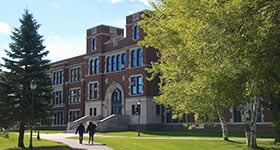Measuring the effectiveness or success of school leaders can be subjective, and it is highly specific to the individual school and district being measured. According to The Wallace Foundation, improvement in teacher and school leader engagement and effectiveness is one key measure. Student performance is another. Are students performing at grade level by subject area? What are the rates of proficiency on state assessments? What percentage of students graduate? Go on to college? These are high-level success indicators, and each school leader needs to flesh out the details of their own success indicators, short-term and long-term.
The Top 5 Qualities of Strong School Leaders
- They have high expectations for the success of their pupils. Setting the bar low makes it easier to achieve your goals, but strong leaders set challenging goals for themselves, for the entire staff and for the students.
- They are highly inclusive, focusing on the progress and personal development of every pupil. One of the most challenging initiatives a school leader has is to help every student improve. An effective leader understands that and fosters a respectful environment where support, intervention and progress can take place.
- They build relationships and collaborate with staff, parents, businesses and the community to share their vision and to support pupil learning and progress. An effective school leader recognizes that he or she cannot implement the school’s vision alone. Inspiring and motivating others to share in the effort is a primary skill school leaders need. One key to this is the ability to recognize individual strengths and weaknesses of your leaders and delegate accordingly.
- They understand the importance of making every teacher better. Ongoing training, professional development, support and encouragement are critical to the success of teachers. Without successful teachers, even the best plans will fail.
- They are problem-solvers. A strong school leader is able to think outside the box and come up with ways to make things happen in spite of challenges. Finding effective solutions that benefit all parties involved is a crucial skill for school leaders.
The School Principal as Leader
A University of Washington study found that there were three main leadership approaches principals use: the “one-man band” leader wants to do it all him- or herself; the “jazz combo” leader is inclined to delegate responsibilities; and the “orchestral leader” shares leadership responsibility throughout the school. The study found that even though different leadership styles exist among principals, assistant principals, formal and informal teacher leaders, and parents, the principal remains the central source of leadership influence.
5 Key Responsibilities of Principals
In addition to the top qualities of a strong school leader, here are five key practices of effective principals, taken from The Wallace Foundation research:
- They shape a vision of academic success for all students.
- They create a climate hospitable to education.
- They cultivate leadership in others.
- They improve instruction.
- They manage people, data and processes to foster school improvement.
Principals who build a collaborative leadership team are able to share their vision of standards and success for all students. “Having high expectations for all is one key to closing the achievement gap between advantaged and less advantaged students.”
Understanding that the school principal builds the quality of instruction and has the opportunity to shape school-wide performance helps teachers overcome the impression that becoming a principal means you no longer have anything to do with instruction. An effective principal is passionate about quality of instruction and engages all members of the school community — staff, students, parents and others in the community.
Preparation for Educators to Move into Leadership Roles
The University of Wisconsin-Superior (UW-Superior) Master of Science in Education – Educational Administration (MSE-EDAD) online program provides a pathway to administration positions including:
- Elementary, secondary, postsecondary administrator.
- Director.
- Administrator.
- Site coordinator.
- Executive director.
- Principal, assistant principal.
For those wanting to move into PK-12 Principalship, UW-Superior offers a custom track of eight core courses (24 credit hours) and a Practicum (six credit hours) specifically geared toward principalship. These courses include Administrative Leadership, Supervision of Instruction, Curriculum Management and Development, School Business Administration, Diversity and Social Justice, Conflict Resolution and Mediation, School Law, and the Principalship. Students will study the roles and responsibilities of the principal, with an emphasis on development of effective instructional leadership skills for the various levels.
In addition, the MSE-EDAD online program offers tracks for Director of Instruction as well as Director of Special Education and Pupil Services.
Learn more about the UW-Superior Master of Science in Education – Educational Administration online.
Sources:
Forbes: The Eight Characteristics of Effective School Leaders
Edutopia: What Makes a Great School Leader?
ThoughtCo.: What Makes a School Administrator an Effective School Leader?
Harvard Business Review: Research: How the Best School Leaders Create Enduring Change
CRPE: Making Sense of Leading Schools: A Study of the School Principalship
The Wallace Foundation: Measuring Success – The School Turnaround Field Guide


